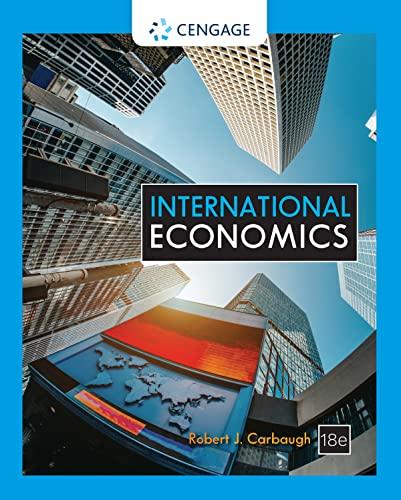Although Vladimir Putin has successfully maintained tight control of Russia's political system, he has not been able
Question:
Although Vladimir Putin has successfully maintained tight control of Russia's political system, he has not been able to control global financial markets. Such was the case in 2014 when the ruble's exchange value depreciated about 40 percent over three weeks. What led to this currency crisis, and how did Russia respond? The crisis was largely due to Russia's international woes. First, the country is highly dependent on its oil and natural gas companies. These energies account for about two-thirds of Russia's exports and over half of its federal budget. With oil prices declining about 50 percent in 2014, downward pressure was placed on the ruble. Second, the war that Russia fomented in Ukraine in 2014 resulted in the United States and the European Union imposing financial sanctions on Russian firms and banks, making it difficult for them to borrow abroad. As the Russian economy weakened and investor confidence deteriorated, many domestic and foreign investors scrambled to take their money out of the country: They sold rubles for stronger currencies, such as the U.S. dollar and the euro, and placed these funds in foreign bank accounts. This put downward pressure on the ruble's exchange value.
With its economy tanking and the public's confidence dwindling, the Russian central bank intervened in the foreign exchange market to shore up the value of the ruble. First, it used some of its foreign exchange reserves to purchase rubles. However, this policy was insufficient in offsetting the ruble's depreciation. Next, the central bank dramatically raised its key interest rate from 10.5 percent to 17 percent in an attempt to keep Russian money in the economy and to try to bring investors from abroad who are attracted by higher interest rates. Despite these policies, the ruble's exchange value continued to decline as Russia's economy headed into recession, global oil prices weakened, and economic sanctions continued to bite. With interest rate increases and sales of foreign reserves proving ineffectual, Russia considered other options to offset the ruble's decline. One would be capital controls whereby the Kremlin could limit people's ability to convert rubles into foreign currency and take it out of the country. However, because the central bank and the ministry of finance considered capital controls to be an extreme measure, they were opposed to using them. While the ruble recovered to some extent in 2015–2017, it still hadn't regained its prior strength moving into 2018. At the writing of this textbook, the future of the ruble looked grim.
What do you think? What difficulties do central banks have in stabilizing weak currencies?
Step by Step Answer:






